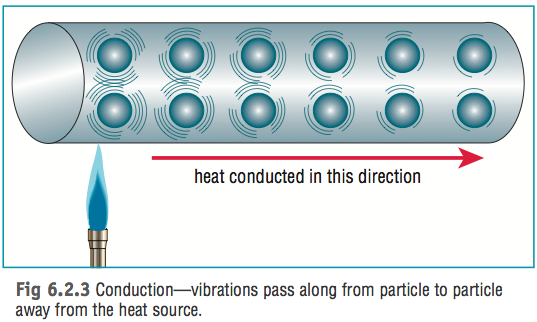


: Digital Temperature Indicator 0☌ to 99.9☌ and least count 0.1oC with multi-channel switch.įORMULAE USED: 1. of temperature sensors in the setup Number of Temperature Sensors mounted on bar Number of Temperature Sensors mounted on water jacket Type of Temperature Sensors Heater Cooling Jacket Dia Length of cooling jacket Dimmer stat for heater coil Digital Voltmeter Digital Ammeter Temperature indicator Length of the Metal Bar Diameter of the Metal Bar Test length of the bar Total no. Switch off the Panel with the help of Mains On/Off Switch given on the Panel. When experiment is over, Switch off heater first. Repeat the above procedure for two different Temperatures. If temperatures readings are same for three times, assume that steady state is achieved. After 30 Minutes start recording the temperature of various points at each 5 minutes interval. Fix the Power Input to the Heater with the help of Variac, Voltmeter and Ammeter provided. Now switch on the supply and make sure the zero position of all digital devices before switching on it. Start water supply (1 LPM) at constant water supply rate.

Hand Watch A/C supply Water supply at constant Rate Beakerįirst of all connect cold water supply at inlet of the Cooling Chamber of setup. Metal Rod Thermal Conductivity Experiment Setup Water under constant head conditions is circulated through the jacket and its flow rate and temperature rise are noted by two temperature sensors provided at the inlet and outlet of the water. The heater is provided with a dimmer stat for controlling the heat input. The temperature of the bar is measured at different section. Surrounded by a cylindrical shell filled with the asbestos insulating powder.
HEAT TRANSFER IN METAL ROD FREE
With increase in the temperature, however the increased lattice vibrations come in the way of the transport by free electrons for most of the pure metals the thermal conductivity decreases with increase in the temperatures for some metals.ĪPPARATUS: The apparatus consists of a metal bar, one end of which is heated by an electric heater while the other end of the bar projects inside the cooling water jacket. In general, however, this latter mode of energy transfer is not as large as the electron transport and it is for this reason that good electrical conductors are almost always good heat conductors, i.e. Energy may also be transmitted as vibrational energy in the lattice structure of the material. In fact, these electrons are frequently referred as the electron gas. Just as these electrons may transport electric charge, they may also carry thermal energy from a high temperature region. In good electrical conductors a rather large number of free electrons move about in the lattice structure of the material. Mechanism of Thermal Conduction in Metals: Thermal energy may be conducted in solids by two modes. In this manner, the energy is passed along through the length of the rod. The atoms in the rod that are exposed to the heat, gain energy in the form of heat and transfer this energy to their neighbours, which then transfer the heat energy to their neighbouring atoms. Gas, Liquid or solid) in which it exists, its crystalline structure if a solid, the temperature and pressure to which it is subjected, and whether or not it is homogeneous material. Thermal conductivity of material is found to depend on the chemical composition of the substances of which it is composed, the phase (i.e. : 9003022 Group : 5īACKGROUND: Thermal conductivity is the physical property of the material denoting the ease with particular substances can accomplish the transmission of thermal energy by molecular motion. THERMAL CONDUCTIVITY OF METAL ROD Heat Transfer & Metrology Lab Name : Anil Chejara Roll No.


 0 kommentar(er)
0 kommentar(er)
